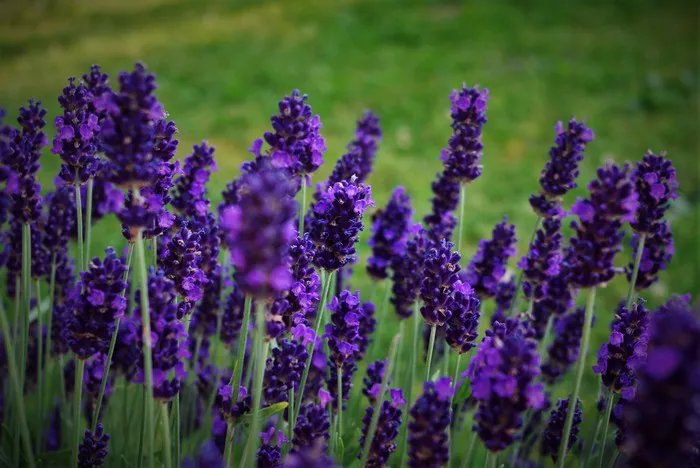Deer can be a significant challenge for gardeners, devouring carefully tended landscapes in search of a meal. Yet, there are plants that these graceful herbivores tend to avoid. Understanding the characteristics of deer-resistant plants can help gardeners create beautiful, low-maintenance landscapes that coexist harmoniously with local wildlife. In this comprehensive guide, we delve into the world of deer-resistant plants, exploring their attributes, benefits, and how to incorporate them into your garden.
Understanding Deer Behavior and Preferences
Before delving into specific plant choices, it’s essential to understand why deer avoid certain plants in the first place. Deer are selective browsers, with preferences varying depending on factors such as region, season, and availability of food. However, several characteristics tend to deter deer from consuming certain plants:
1. Fragrance: Deer have a keen sense of smell and are often repelled by strong or pungent odors. Plants with aromatic foliage, such as herbs like lavender (Lavandula spp.) and rosemary (Rosmarinus officinalis), are less likely to be nibbled on by deer.
2. Texture: Plants with prickly, tough, or leathery foliage can be less palatable to deer. Examples include ornamental grasses like Miscanthus spp. and plants with fuzzy leaves like lamb’s ear (Stachys byzantina).
3. Toxicity: Many plants contain compounds that are toxic to deer when ingested. While some of these plants may also be toxic to humans or pets, they can be useful additions to a deer-resistant garden when used appropriately and with caution.
4. Bitter Taste: Certain plants produce compounds that impart a bitter taste, deterring deer from feeding on them. These include herbs like sage (Salvia spp.) and ornamental plants such as yarrow (Achillea spp.).
5. Thorns and Spines: Plants armed with thorns, spines, or prickles provide a physical barrier that discourages browsing. Examples include shrubs like barberry (Berberis spp.) and roses (Rosa spp.).
Selecting Deer-Resistant Plants for Your Garden
When choosing plants for a deer-resistant garden, it’s essential to consider the specific deer population in your area, as well as local climate and soil conditions. While no plant can be considered entirely deer-proof, incorporating a diverse selection of deer-resistant species can help minimize damage and maintain the beauty of your landscape. Below are some categories of plants known for their deer resistance:
1. Perennials:
Perennial plants are a staple in many gardens, providing years of reliable growth and seasonal interest. Several perennial species are known for their deer-resistant qualities, including:
Lavender (Lavandula spp.): With its fragrant foliage and vibrant blooms, lavender adds beauty and aroma to any garden while deterring deer with its strong scent.
Sedum (Sedum spp.): Succulent sedums are prized for their drought tolerance and low maintenance, making them an excellent choice for deer-resistant ground cover in sunny locations.
Coneflower (Echinacea spp.): These colorful perennials attract pollinators while repelling deer with their tough, spiky foliage and bitter-tasting flowers.
Russian Sage (Perovskia atriplicifolia): This drought-tolerant perennial features aromatic foliage and airy purple blooms that deer tend to avoid.
2. Shrubs:
Shrubs play a vital role in garden design, providing structure, privacy, and habitat for wildlife. When selecting shrubs for a deer-resistant landscape, consider the following options:
Boxwood (Buxus spp.): Prized for their dense, evergreen foliage and versatile growth habits, boxwoods are rarely bothered by deer thanks to their leathery leaves.
Forsythia (Forsythia spp.): These early-flowering shrubs brighten the landscape with their golden blooms while deterring deer with their bitter-tasting foliage.
Juniper (Juniperus spp.): With their prickly foliage and drought tolerance, junipers are excellent choices for deer-resistant hedging and screening.
Witch Hazel (Hamamelis spp.): Known for their late-winter or early-spring blooms and attractive foliage, witch hazels are rarely browsed by deer.
3. Trees:
Trees provide shade, structure, and habitat for wildlife in the garden. While young trees may require protection from browsing deer, several tree species are known for their resistance to deer damage:
Japanese Maple (Acer palmatum): These ornamental trees offer a stunning display of foliage colors and textures while often escaping deer attention due to their bitter-tasting leaves.
American Holly (Ilex opaca): With its glossy, spiny foliage and bright red berries, American holly is a classic choice for deer-resistant landscaping.
River Birch (Betula nigra): Native to North America, river birch trees feature attractive peeling bark and are less favored by deer due to their high moisture content.
Ginkgo (Ginkgo biloba): Known for their unique fan-shaped leaves and tolerance to urban conditions, ginkgo trees are rarely browsed by deer.
Implementing Deer-Resistant Strategies in Your Garden
While selecting deer-resistant plants is an essential step in creating a resilient landscape, there are additional strategies that gardeners can employ to minimize deer damage:
1. Fencing: Installing a physical barrier, such as a tall fence or deer netting, can effectively deter deer from entering your garden. Be sure to choose a fence height that exceeds the typical jumping capabilities of deer in your area.
2. Repellents: Various commercial deer repellents are available, ranging from scent-based sprays to motion-activated deterrents. These products can help discourage deer from browsing on susceptible plants.
3. Companion Planting: Interspersing deer-resistant plants with more susceptible species can help camouflage favored plants and confuse browsing deer. Additionally, certain companion plants, such as aromatic herbs and flowers, may help repel deer from nearby crops.
4. Garden Design: Consider incorporating deer-resistant features into your garden design, such as raised beds, container gardens, and vertical plantings. These methods can make it more difficult for deer to access and damage your plants.
Conclusion
Creating a garden that coexists harmoniously with local wildlife, including deer, requires thoughtful planning and consideration of plant selection, landscape design, and deer behavior. By incorporating deer-resistant plants into your garden and implementing effective deterrent strategies, you can enjoy a beautiful and thriving landscape while minimizing damage from browsing deer. Remember to observe local conditions and consult with gardening experts or extension services for tailored recommendations based on your specific location and needs. With careful planning and persistence, you can cultivate a garden that brings joy and beauty while maintaining balance with nature.


